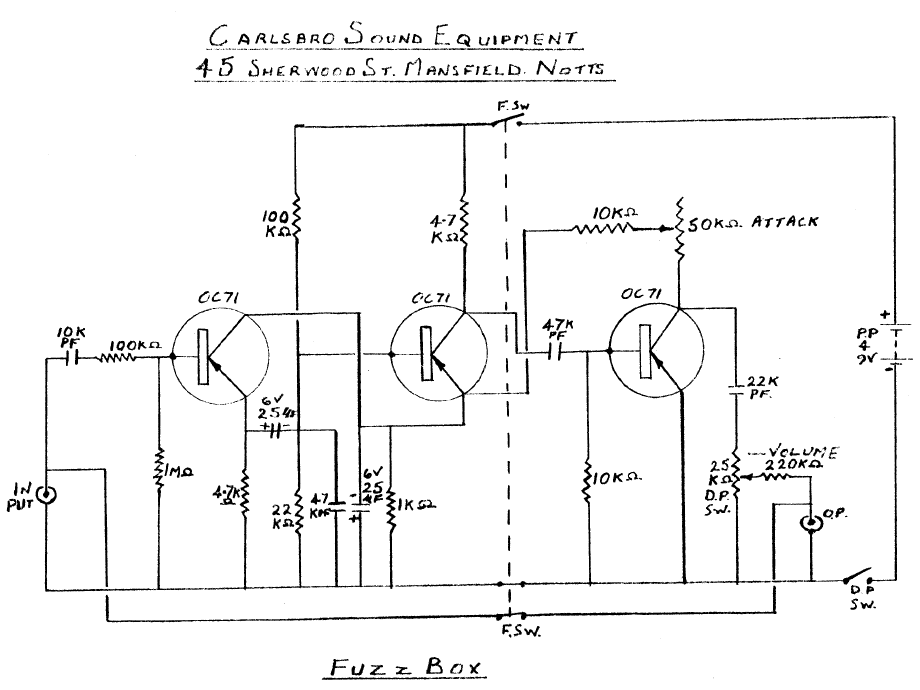Overview

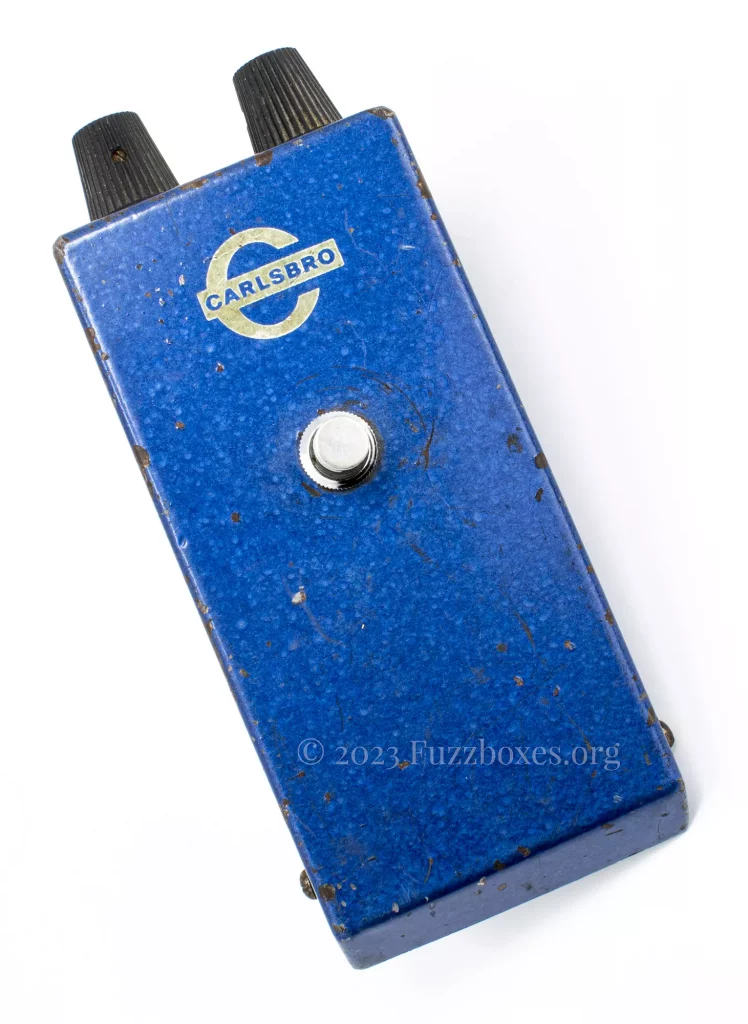
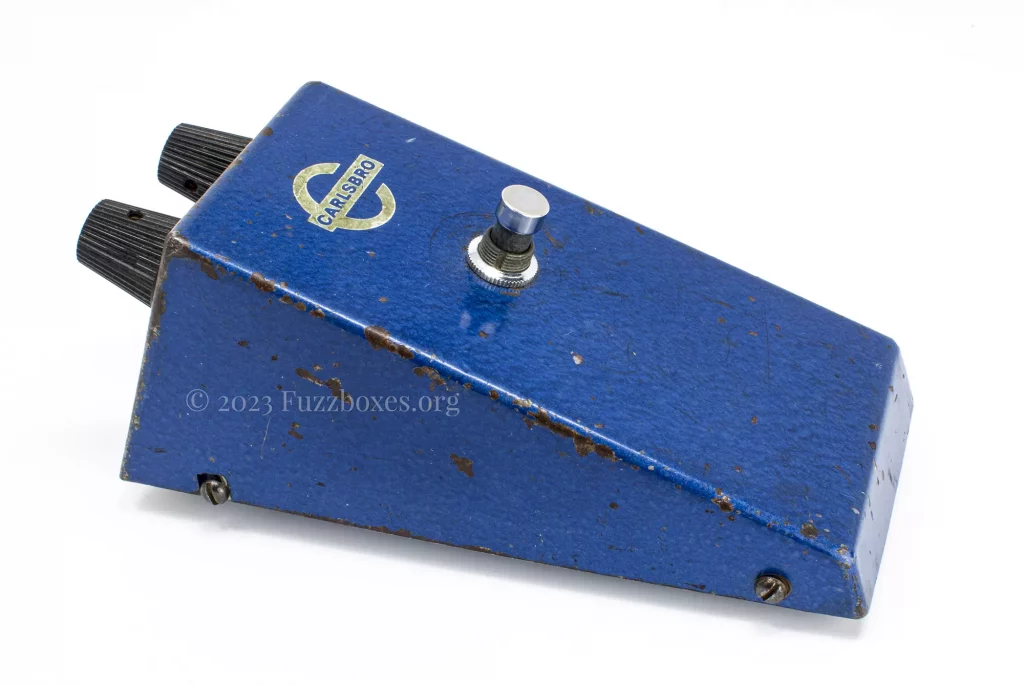
Carlsbro was a British guitar amplifier manufacturer, founded by Stuart & Sheila Mercer in Nottingham, in 1959.1 Carlsbro was formally registered as a company on the 5th of September 1962.2 The company initially supplied amplifiers directly to musicians in the Midlands, and quickly established a retail outlet on 4-5 Station Street, in Mansfield, close to the headquarters on 45 Sherwood Street.3
By 1969, Carlsbro’s shop in Mansfield was named the ‘Carlsbro Sound Centre’,4 and during the 1970s, several other Carlsbro Sound Centres were opened across northern England, including in Leicester, Nottingham & Sheffield.5 In 1975, Carlsbro’s Mansfield Sound Centre finally relocated from its original Station Road address, to a larger premises on Chesterfield Road North.6
In addition to the official Carlsbro retail outlets, Carlsbro’s amplifiers and accessories (including the Fuzz-Tone) were also sold by other retailers in the UK.7 The early Carlsbro fuzz pedals having been available to purchase as early as by 1966 was also supported by the original owner of one8 and by the date codes on the potentiometers of surviving exemplars.
Tech specs
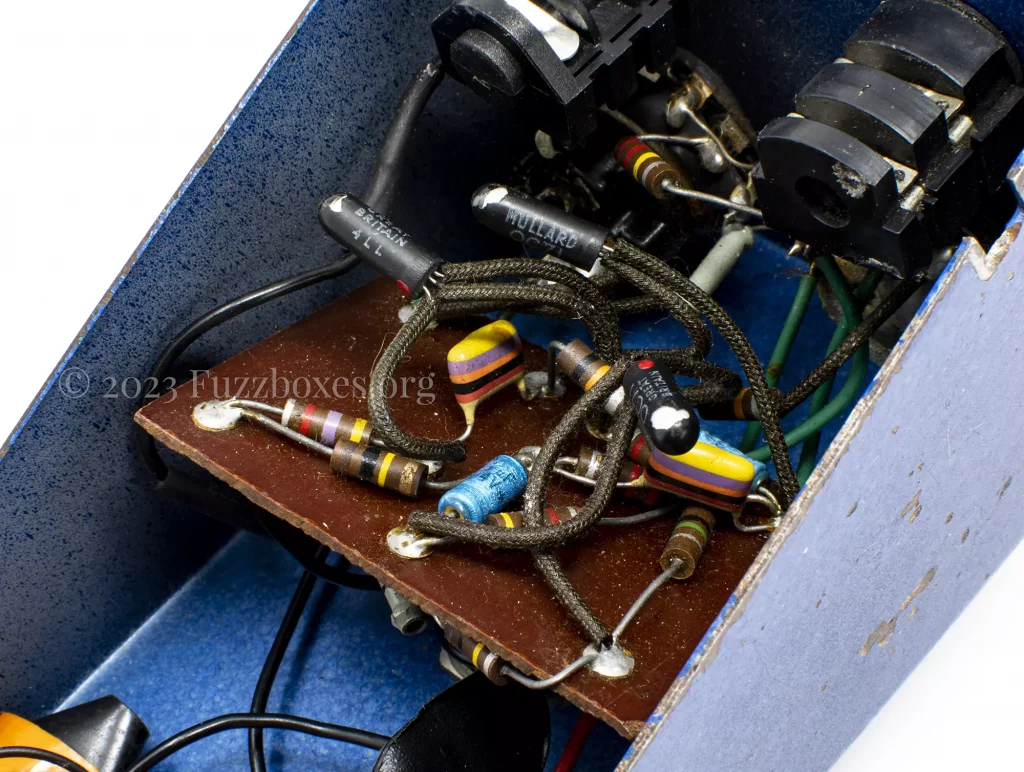
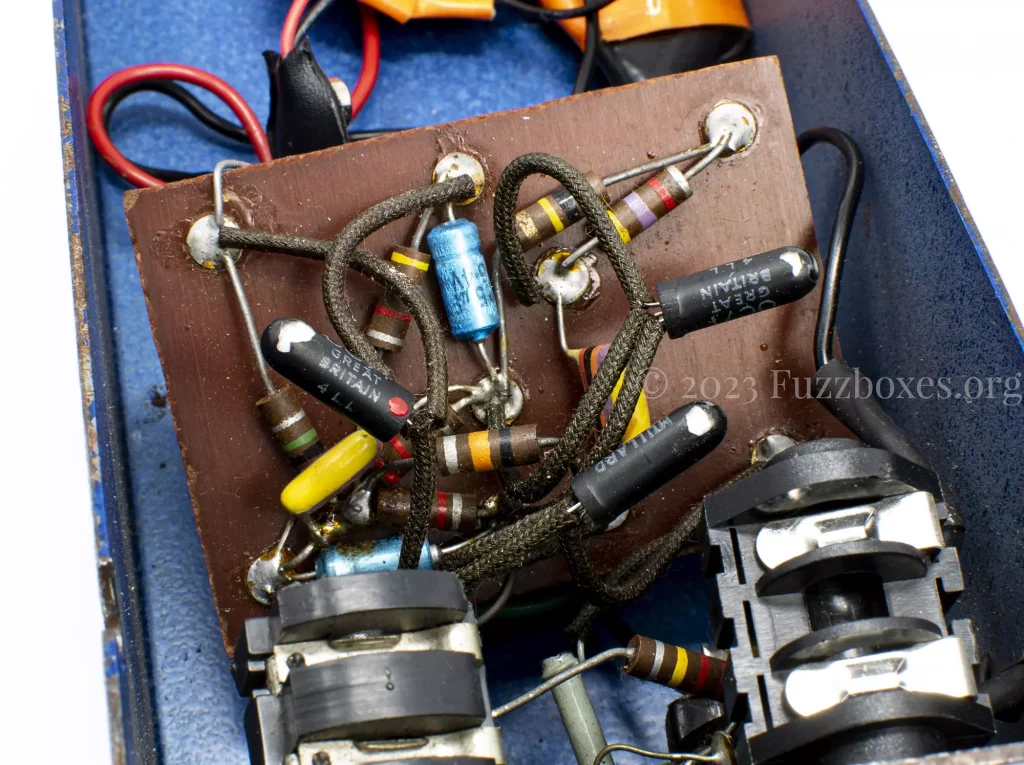
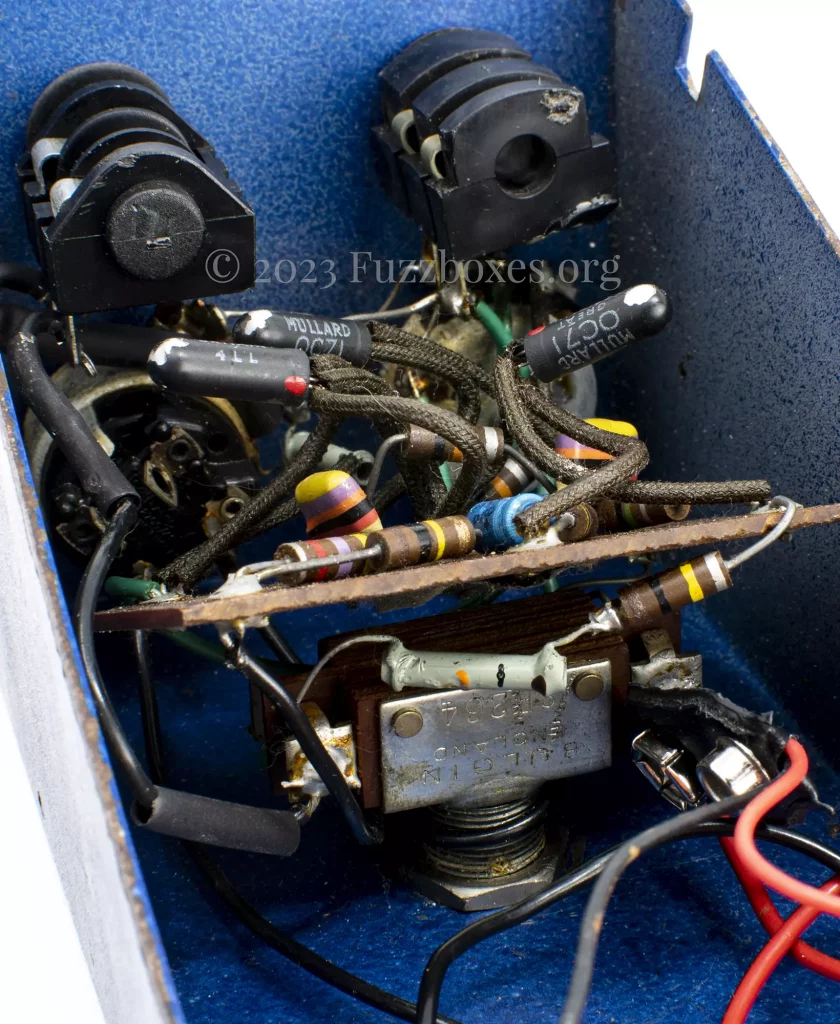
The Carlsbro Fuzz-Tone was housed in a folded steel enclosure, which was finished in a dark blue hammertone. Like many early British-built fuzz boxes, Carlsbro’s pedal was powered by the now-obsolete cylindrical PP4 (9 volt) batteries. The electronic components were populated onto an eyelet board, and the general operation of the pedal was largely the same as the various other fuzz boxes that were being developed at the time.
In fact, the shape of the enclosure and the construction of the electronics are almost identical to Gibson’s famous Maestro Fuzz-Tone. Some might be surprised, however, to learn that Carlsbro’s fuzz box actually featured a different electronic circuit to any others of its known contemporaries. Unlike the majority of the early fuzz boxes (built on either side of the Atlantic) the Carlsbro Fuzz-Tone was not a direct copy of Gibson’s product.
Pictured above is a scan of the original factory schematic for Carlsbro’s Fuzz-Tone. This schematic was acquired from Carlsbro by Bart Provoost before the original company was sold to its current owners. Interestingly, the engineer who drew up the circuit in 1966 has mistakenly flipped the PP4 battery’s polarity around. The triplet of OC71 germanium transistors used for these Carlsbro fuzz boxes are PNP types and require a positive ground to work in this circuit.
Notable users
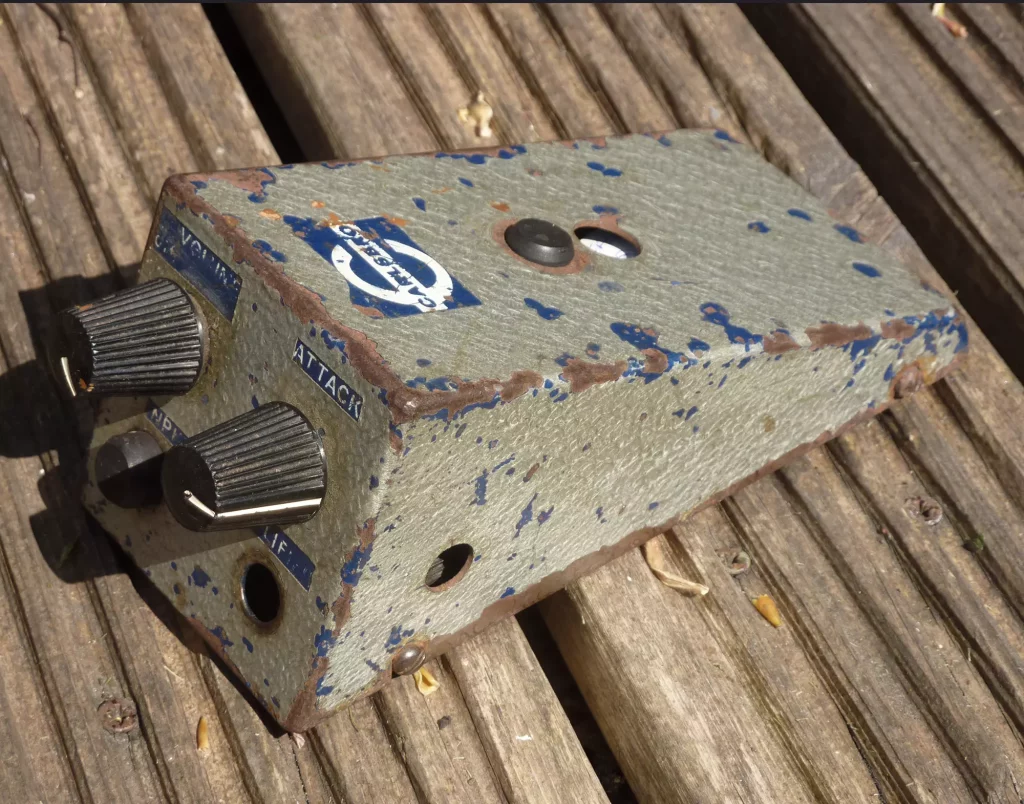

Notable recordings featuring the Carlsbro Fuzz-Tone include Skip Bifferty’s ‘On love’,9 and the Sorrows’ ‘Pink, purple, yellow & red’.10
Pictured above are the remains of the actual Carlsbro fuzz pedal that was formerly owned by the Sorrows. This pedal travelled with the group to Italy, where they lived for a while, and was at one point repainted in silver Hammerite.
Sola Sound pedals
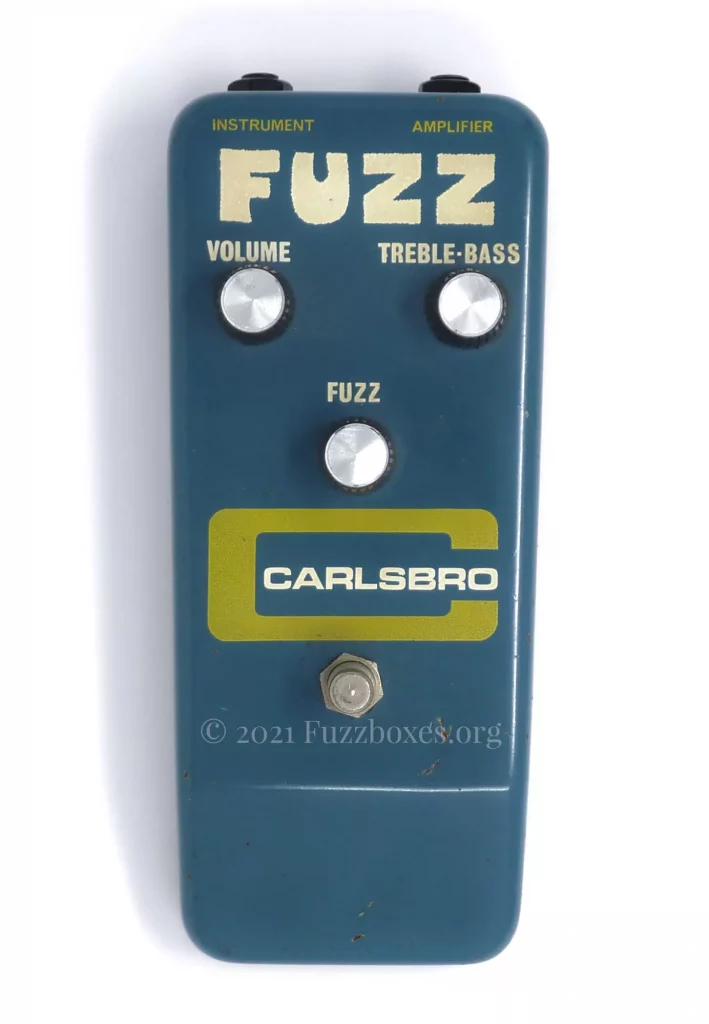
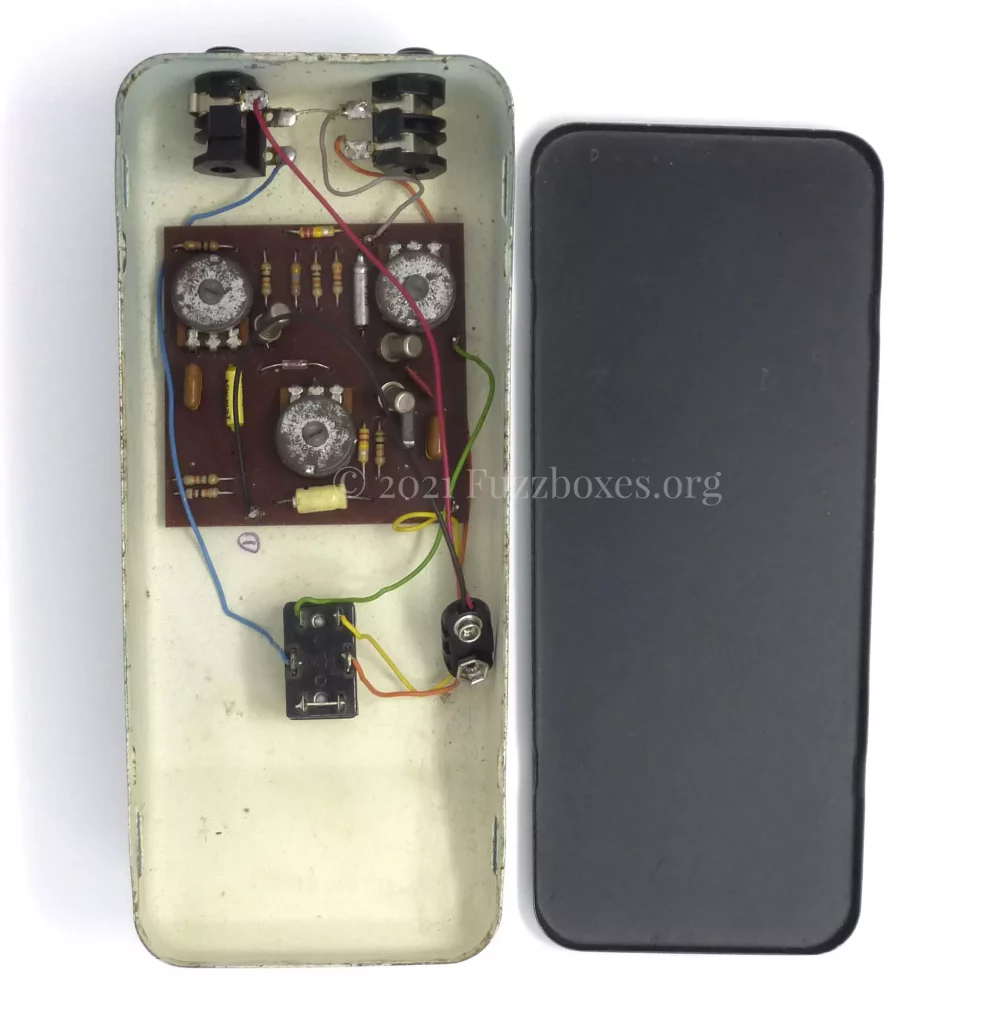
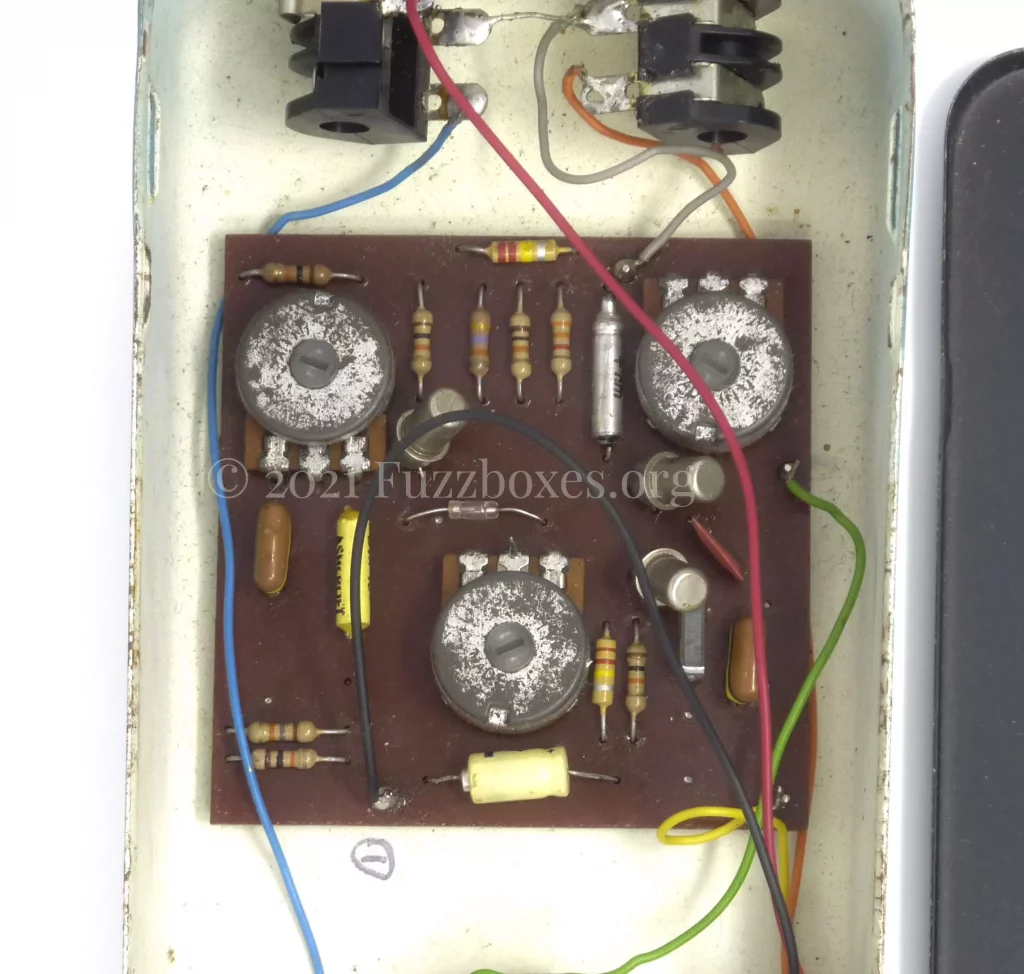
It is not known for how long production of the blue wedge-shaped 1966 Carlsbro Fuzz-Tone lasted, but the very low number of known surviving examples suggests that the model had a rather limited availability.
By the early 1970s, however, Carlsbro offered a new fuzz box, which was this time supplied to them by Sola Sound. According to date stamps inside surviving original pedals, the Sola Sound version of the Carlsbro fuzz was manufactured at least until 1976. This three-knob pedal was identical to the various fuzz boxes that Sola Sound were also supplying to other companies (such as Park and Vox) at the time, as well as to the Tone Bender [MKIV] that Sola Sound were selling under their own brand name.
There was clearly a greater demand for a fuzz box from Carlsbro by the 1970s, because the number of surviving three-knob, Sola Sound-built Carlsbro pedals dwarfs the earlier wedge-shaped pedal from 1966 by a significant margin.
Share your fuzz!
I welcome any comments, feedback, queries & corrections in relation to the Fuzzboxes.org project. Please get in touch via this contact form (or on the ‘contact‘ page).
Much of our understanding of the development of 1960s fuzz boxes comes from analysis of surviving pedals themselves, and so photos of pedals belonging to readers are particularly useful in furthering this research.
If you would like to contribute pictures of 1960s-era guitar effects to Fuzzboxes.org, then feel free to send in any pictures via the uploader below. Photos are greatly appreciated, and any submissions are not published on this website without advance agreement with the contributor.
Thanks to J. Turnbull, R. Lomas & A. Jewell.
- https://web.archive.org/web/20210613090812/https://www.carlsbro.com/about/
- Bishop, Andrew, Carlsbro, Our History, 2007, p. 3
- International Musician & Recording World, November 1975, p. 49
- Beat Instrumental, May 1969, p. 29
- Electronics & Music Maker, July 1983, pp. 23-24
- International Musician, November 1975, p. 47
- Midland Beat, May 1966, p. 6
- A. Jewell (personal communication, 13th January 2016)
- J. Turnbull (personal communication, 3rd March 2020)
- R. Lomas (personal communication, 19th April 2020)
